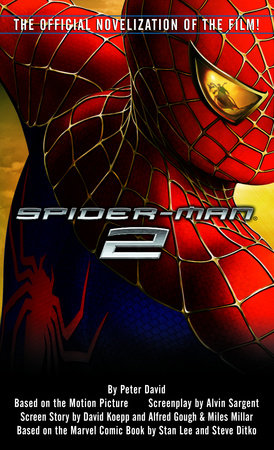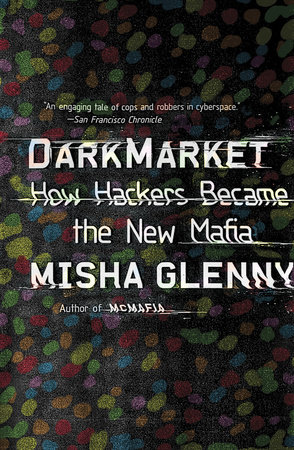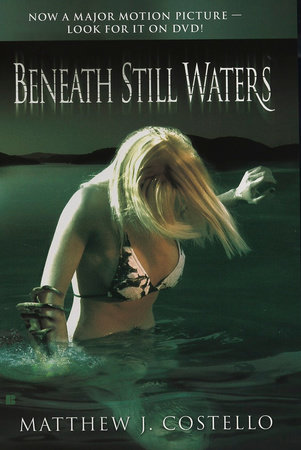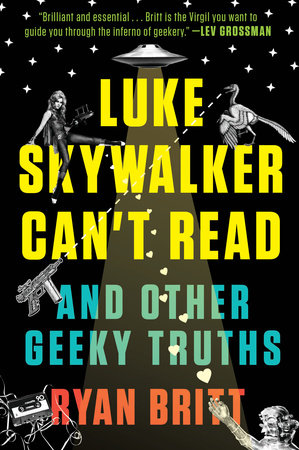Author Q&A
Why did you decide to focus Strange Stars on the sci-fi music of the ’70s?
Originally, Strange Stars was going to cover science fiction’s influence on music in every decade from World War II to the present day. But I realized that wouldn’t give me enough room to really dig in and get in-depth. My editor at Melville House asked me if there was a way I could scale down my outline, and since David Bowie was always going to be the central figure in the book, I thought about his story and his catalogue of music. That’s when I realized “Space Oddity,” his first big sci-fi song, and “Ashes to Ashes,” the sequel to “Space Oddity,” came out in 1969 and 1980, respectively—which meant those two songs bookended the ’70s perfectly. As soon as that realization hit me, the rest of the book fell into place, and I was able to go deeper about Bowie as well as so many of the other seminal sci-fi musicians of that decade. And since the ’70s was when Star Wars came out, which transformed sci-fi forever, sticking to that decade made that much more sense to me.
What inspired you to write Strange Stars?
I grew up in the ’70s and ’80s surrounded by music. My mom is a huge rock fan and concertgoer, and since I was raised as secular as you can get, music was pretty much our religion at home. David Bowie always stuck out to me as a someone special, and since he had a big commercial resurgence in the early ’80s with Let’s Dance, he felt as though be belonged to my generation as much as my mom’s. I was also heavily into science fiction as a kid—I saw Star Wars in the theater when it came out in the summer of 1977, when I was five years old—so when I discovered that Bowie wrote sci-fi music, something clicked in my young brain. Bowie was my first concert as well, and I saw him on the Glass Spider Tour in 1987, which incorporated lots of his sci-fi-themes in the sets and costumes. I’ve always wanted to write a book about Bowie, and eventually I realized I needed to find a fresh angle to him, since he’s had so much written about him. I pitched a proposal for a book about Bowie’s sci-fi concept album The Rise and Fall of Ziggy Stardust and the Spiders from Mars to the popular 33 1/3 book series a few years ago, but it was rejected. That lit a fire under me to find some other way to tell this story of sci-fi music, Bowie’s as well as that of other artists. I was already writing Strange Stars when Bowie died suddenly in January of 2016, and that just motivated me more.
David Bowie is the central figure in Strange Stars, but who else is important to the story?
So many astounding musical artists of the ’70s play a role in Strange Stars—and funnily enough, many of them have ties to Bowie, such as T. Rex, Hawkwind, Brian Eno, Kraftwerk, The Human League, and Devo. The other primary figures in the book are the late Paul Kantner of Jefferson Airplane and Jefferson Starship, who actually surpasses Bowie when it comes to his dedication to using rock music as a vessel science fiction. George Clinton and his Parliament-Funkadelic collective are essential, as are Blue Oyster Cult and Rush. But some lesser-known and/or dismissed artists of the era are given space in Strange Stars, including Meco, the producer responsible for the platinum-selling disco version of John Williams’ Star Wars theme, and more obscure musicians and bands such as Magma, Be-Bop Deluxe, and The Undisputed Truth. I wanted to make sure that I highlighted the bona fide stars of the era while paying enough attention to the esoteric fringes of sci-fi music.
Why is the release of Star Wars in 1977 such a pivotal event in Strange Stars?
Star Wars changed the game. Not only did it radically rewrite the rules of sci-fi cinema, it turned science fiction into something cool rather than something kitschy or kooky in the eyes of the mainstream. When that happened, a similar upheaval happened in sci-fi music. Suddenly, tons of musicians were jumping on the sci-fi bandwagon in the hopes of scoring a novelty hit, whereas in the earlier half of the ’70s, sci-fi musicians would occasionally succeed despite their outer-space obsessions, not because of them. In other words, sci-fi music became a trend overnight, where before it had been more cultish. It also caused the more serious sci-fi musicians to rethink their approach; rather than writing about aliens and intergalactic spaceships and so on, which was suddenly the popular province of Star Wars, songwriters who loved sci-fi began writing about more down-to-earth themes, such as artificial intelligence, computers, and robotics.
Strange Stars covers a lot of ’70s rock music, but why was it important to you to also cover funk, R&B, jazz, disco, and even reggae?
Whenever I would bring up my idea for Strange Stars to people while I was writing it, the most common response I got was, “Oh, so you mean, Rush and Pink Floyd and Yes and stuff like that?” There’s a common misperception that sci-fi music of the ’70s was dominated by white people making progressive rock. Of course, those bands play an important part—but just as important are the black artists who contributed enormously to sci-fi music that decade, including jazz artists like Sun Ran, funk artists like Parliament and Dexter Wansel, reggae artists like Lee “Scratch” Perry,” and the vast wave of disco artists who comprised the subgenre known as space disco in the late ’70s. It would have been criminal if I had only focused on the white rock bands of the era, most of whom have already benefitted from being written about so much.
How does the real-life technology of the ’70s factor into Strange Stars?
The ’70s were a bonanza of technological development, and that influenced the sci-fi musicians of the decade just as much as sci-fi authors and filmmakers did. What seemed startlingly futuristic just a decade earlier was becoming commonplace—everything from space travel to home computing to industrial robots to video games. That sudden onrush of new technology caused a lot of amazement but also a lot of angst, as evidenced by alarmist pop-science books of the ’70s such as Alvin Toffler’s Future Shock. Many musicians keyed into this mix of awe and fear—just as many of them adopted the innovations and newfound accessibility in musical technology of the time, from synthesizers to sequencers to vocoders, all of which helped make the sci-fi music of the ’70s sound uniquely futuristic, even today.
What are some of the anecdotes and revelations in Strange Stars that you think readers might be surprised to learn?
One of my favorite anecdotes in Strange Stars is about how David Bowie spent an enormous amount of time, energy, and money in a hotel room in 1974, building a model of Hunger City—the dystopian setting of his sci-fi album Diamond Dogs—then filming a treatment for a film adaption he hoped to have produced. There’s also the story of how Neil Peart, the drummer and lyricist of Rush, bought a used typewriter on tour so that he could sit in the tour bus and write science fiction instead of partaking in the typical rock-star debauchery one imagines would normally go on in a tour bus full of rock stars. And I also love relating the story of George Clinton’s encounter with aliens, which he’s retold in various configurations over the years. That was one of my favorite parts of writing Strange Stars—not just describing this incredible music, but reconstructing the scenes in which so many momentous revelations in sci-fi music took place.





















